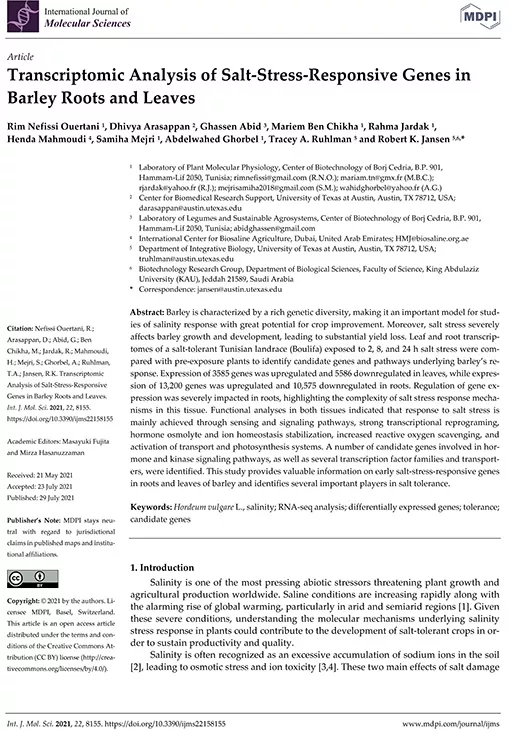Transcriptomic Analysis of Salt‐Stress‐Responsive Genes in Barley Roots and Leaves
Barley is characterized by a rich genetic diversity, making it an important model for studies of salinity response with great potential for crop improvement. Moreover, salt stress severely affects barley growth and development, leading to substantial yield loss. Leaf and root transcriptomes of a salt‐tolerant Tunisian landrace (Boulifa) exposed to 2, 8, and 24 h salt stress were compared with pre‐exposure plants to identify candidate genes and pathways underlying barley’s response. Expression of 3585 genes was upregulated and 5586 downregulated in leaves, while expression of 13,200 genes was upregulated and 10,575 downregulated in roots. Regulation of gene expression was severely impacted in roots, highlighting the complexity of salt stress response mechanisms in this tissue. Functional analyses in both tissues indicated that response to salt stress is mainly achieved through sensing and signaling pathways, strong transcriptional reprograming, hormone osmolyte and ion homeostasis stabilization, increased reactive oxygen scavenging, and activation of transport and photosynthesis systems. A number of candidate genes involved in hormone and kinase signaling pathways, as well as several transcription factor families and transporters, were identified. This study provides valuable information on early salt‐stress‐responsive genes in roots and leaves of barley and identifies several important players in salt tolerance.
Year
2021
Publication Source
International Journal of Molecular Sciences
Publication type
Research Article
Volume/Chapter/Issue
22











